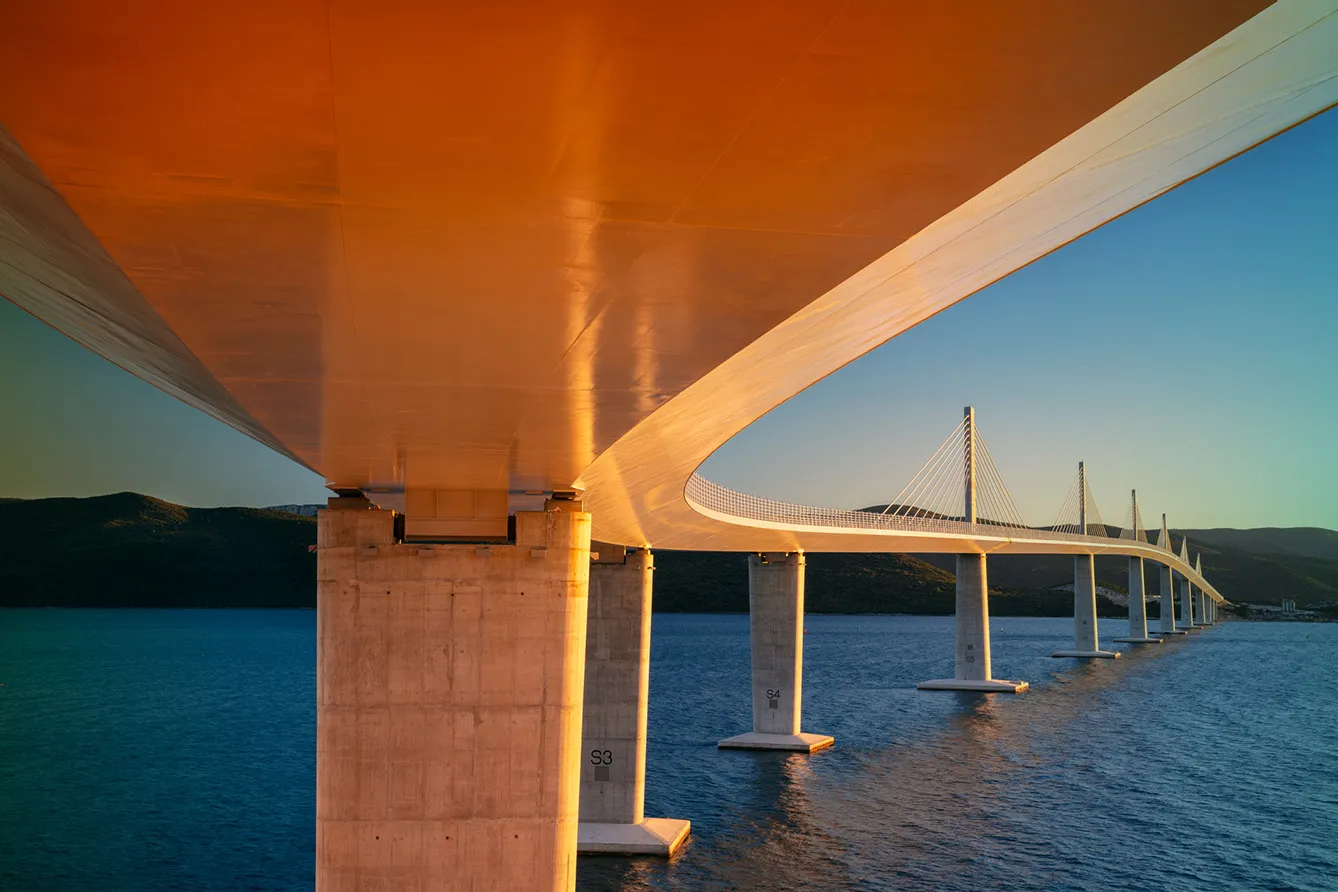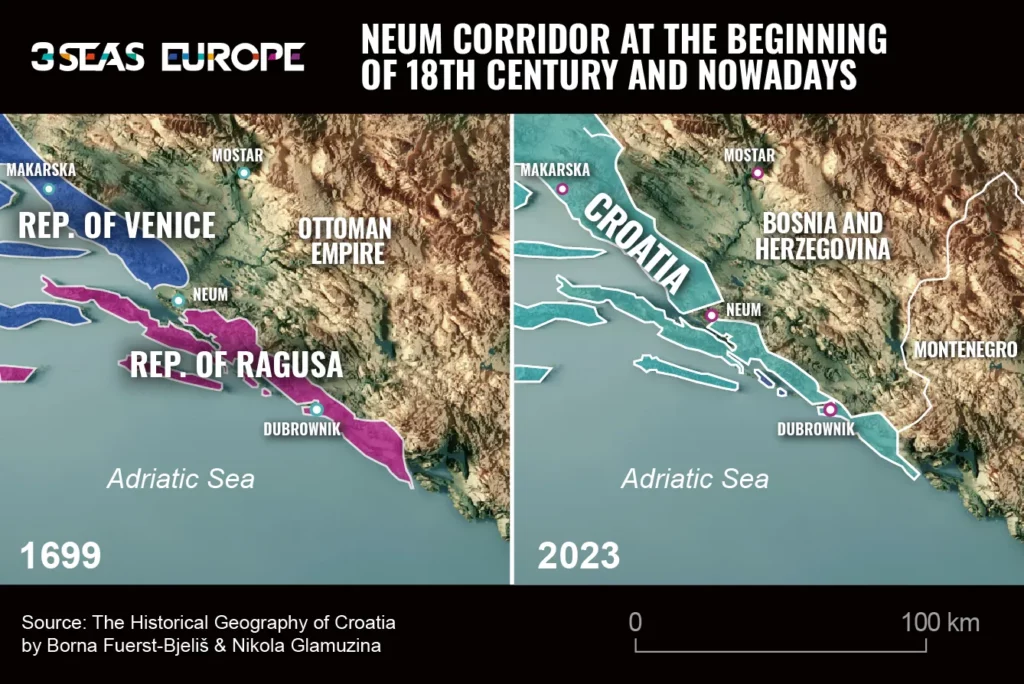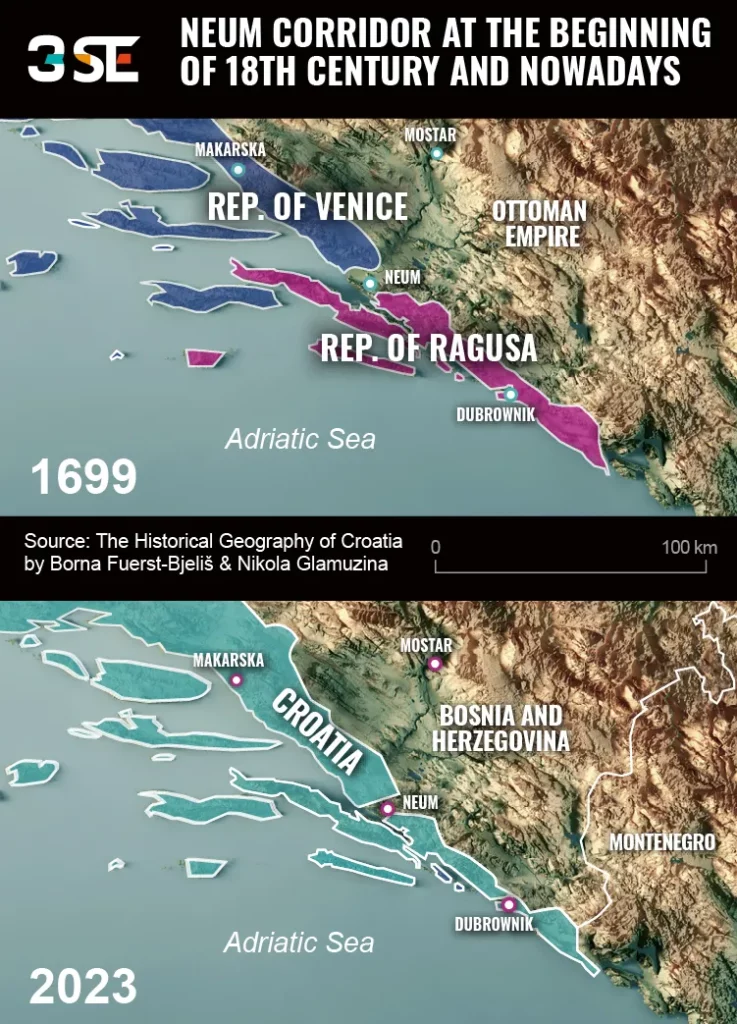Have you ever wanted an area near your country where prices are significantly cheaper – maybe with a little “tax haven” thrown in? Until recently, any traveler and tourist who traveled by car to the far south of Croatia, to today’s Dubrovnik County, had to cross the border with neighboring Bosnia and Herzegovina twice thanks to a 10-km-wide sliver of Bosnian territory giving that country access to the sea and divides the Croatian coastline. This corridor has a “tax paradise” for travelers and tourists because absolutely everything is cheaper compared to the more expensive Croatian coast.

What is the Neum Corridor
What exactly is the Neum Corridor, and how different is it from Croatia? It is a corridor that makes up the city of Neum and its surroundings, and according to the population census, 97% are Croats, and the same number are Roman Catholics. Despite this ethnic, religious, and linguistic closeness, the Neum area belongs to Bosnia, though it does not have the strong fiscal and monetary controls of the Bosnian state, allowing opportunities for cheaper products.
The main thoroughfare is littered with countless shops selling clothing from “fake expensive” fashion brands, restaurants with very cheap and delicious food, and gas stations with cheaper gas. On top of all that, there is uncontrolled construction of apartments and hotels, offering cheap accommodation to all tourists. Making it even more attractive is the fact that it is possible to pay with both Bosnian marks and euros.
How did this division of Croatia into two parts even come about? In the 16th and 17th centuries, the two city-states, Dubrovnik and Venice, were rivals due to the aspiration for supremacy in the Adriatic. Venice also had its territories in neighboring Dalamacia.
Thus, Dubrovnik gave a part of its territory (the area of Neum Corridor) to the then-Ottoman Empire so that it would act as a “buffer zone” between the territories of the two rivals. Dubrovnik had a good relationship with the Ottomans due to the development of trade in the interior. Centuries passed, and the city-states disappeared. Yet the Neum Corridor remained connected to states on the territory of today’s Bosnia and Herzegovina. During the Austro-Hungarian and Yugoslav rule, the Neum Corridor administratively divided Croatia’s Dalmatian region into two parts within the same state.
A long-lasting border
You may wonder how the border remained through centuries and wars – even the wars of the 1990s. Though the map was redrawn multiple times, this 10 km-wide stretch of Bosnian territory that stretches 30 km deep into the country remained consistent throughout. Croatia was internationally recognized within its borders within Yugoslavia and never wanted to conquer the Neum Corridor and instead agreed on an easier transition for the surrounding population. However, relations around the Neum Corridor changed in 2013 when Croatia joined the EU, and thus, border controls were strengthened.
Alas, this also meant that when traveling along Croatia’s coastline, you had to wait at border controls to cross the 10km stretch of the Neum Corridor. And, of course, this was inconvenient for locals and tourists alike. So, the Croats decided to build a bridge to bypass that corridor. Thus, in 2022, Croatia officially opened the Pelješac Bridge, which finally connected mainland Croatia to its Pelješac Peninsula, exactly 323 years after the creation of the Neum Corridor.
The Neum Corridor has divided Croatian territories for centuries, and its creation hides a complex story about interstate relations along the Adriatic coast at the time. After the construction of the bridge, the crowds at its borders have decreased, but there are still interested tourists and travelers who are happy to pass through Neum Corridor and stop at least for a cheaper lunch or fill up with cheaper fuel.









